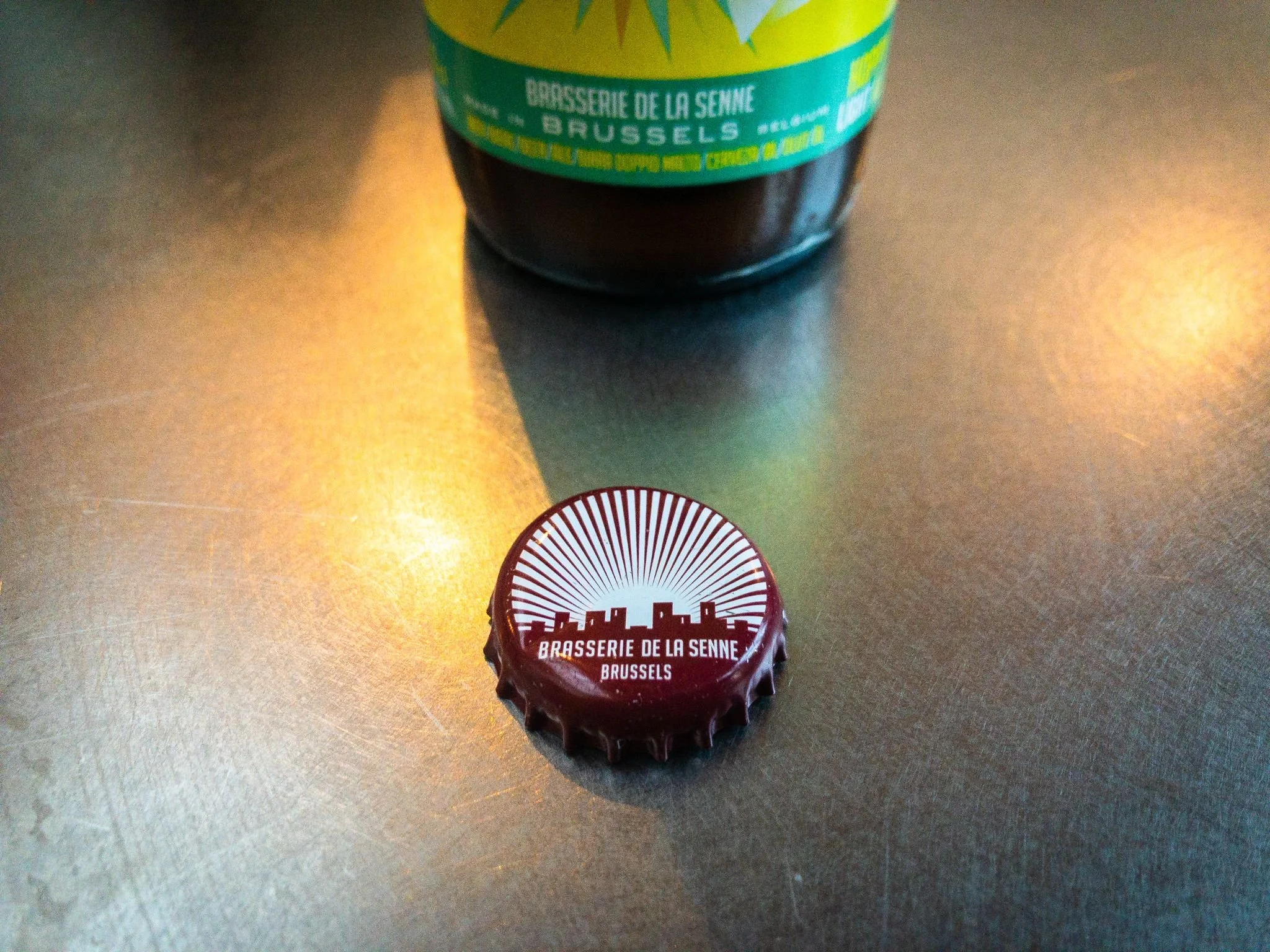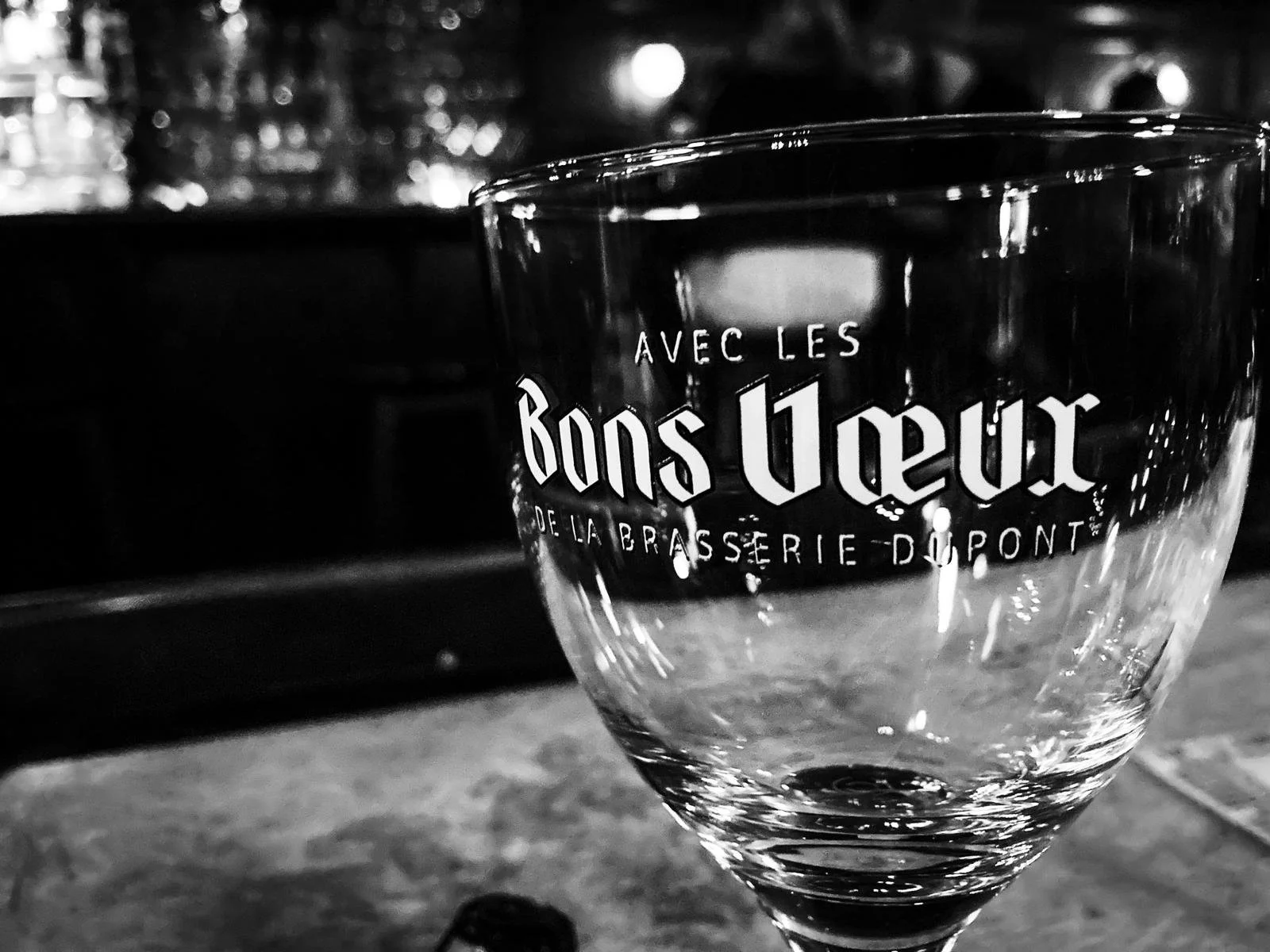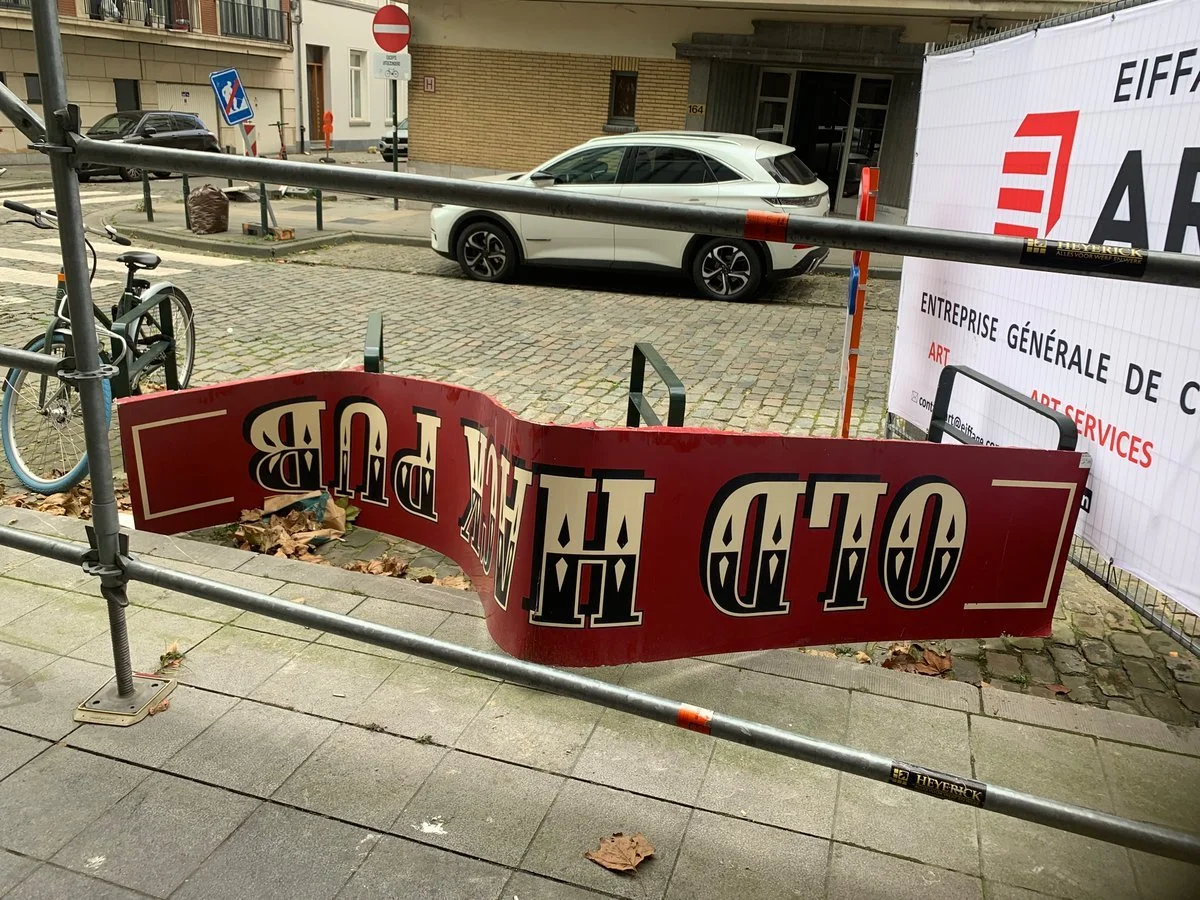The heat is on // Climate change is coming for Brasserie Cantillon
Summer 2018 in Brussels was hot. Bushes spontaneously combusting, train engines exploding, dogs and cats living together hot. Okay, maybe not that last one but Brussels did experience its warmest summer since records began in 1901. While the city melted in the heat, at Brasserie Cantillon brewers were in a cold sweat over the state of their lambic, the spontaneously fermented beer that is blended to make gueuze. Heat waves can be death for lambic, forcing brewers to discard thousands of litres of spoiled beer.
As climate change makes summers like 2018 the norm rather than the exception, new research has shown that warming temperatures have already started to impact on traditional lambic brewing. Warmer winter nights and hotter summer days have narrowed the window during which lambic can be brewed without modern interventions. By the end of the 21st century, lambic brewing as practiced by Cantillon could disappear. Climate change is coming for lambic, and it will be hard for Cantillon to stop it.
Climate change and lambic - "This is real"
The idea for this research came to Mark and Asa Stone, naturally enough, during a brewery tour. They both have doctoral backgrounds in climate and environmental science, and Asa is an Advanced Cicerone. On a visit to Cantillon in the winter of 2016 their academic interest was piqued. “Just listening to everybody and understanding how everything is done here, and since I work on climate change issues, it struck me that, ‘Jeez, this could be an issue’,” says Mark. “I just started playing with the data, saw the trends, and it looked like this is real.”
An email followed to Jean Van Roy, Brasserie Cantillon’s owner. He in turn passed it along to Adam Harbaugh, one of two administrators of the archive/encyclopaedia/community/keeper of the lambic flame that is Lambic.info. Adam jumped on-board to give a socio-cultural perspective, and their little research group was complete.
Reviewing a century of weather trends
The trio worked with Jean to install a weather station on the roof and temperature sensors in key locations around the brewery. Future research will be able to use this data to look at exactly what is going on inside the brewery, for example being able to match weather trends with the progress of fermentation in particular barrels. “We could probably in the future link some type of lambic with some temperature,” says Jean.
While that data was being accumulated, Mark, Asa, and Adam reviewed publicly available meteorological data going back to 1901, looking out for trends in night-time temperatures in winter, and day-time summer temperatures. Both are vital to the making of good lambic.
Lambic is traditionally made by letting fresh wort (unfermented brewing liquid) cool down and be inoculated with yeast and bacteria from the environment, rather than the more orthodox way of artificially cooling it and adding in yeast. Because of this, lambic brewers have only a short window during the year where the temperature is warm enough to encourage good microbes to inoculate the lambic wort but not too warm that its supports microbes that would ruin the beer.
“We could probably in the future link some type of lambic with some temperature.”
Bezomerd lambic
Breweries like Cantillon that cool their wort the traditional way – overnight in an open vessel or coolship in the roof of the brewery – rely on night-time temperatures between -8°C and +8°C for proper cooling and inoculation. That’s why the lambic brewing season traditionally used to run from October to April, when winter nights in Brussels and the Payottenland are suitably chill. Lambic brewed any later runs the risk of being what Jean’s father Jean-Pierre would call bezomerd, Brussels dialect for that's suffered from “too much summer”.
Once cooled and inoculated, the lambic is placed in wooden barrels to age and is exposed again to microbes living on the wood. To prevent undesirable bacteria from again spoiling the beer, the best temperature for aging lambic is below 25°C, and explains why lambic brewers are so vigilant about hot summer weather.
What the three researchers found in the historical data for these two variables was stark. “Jean pulled together the brewing records for us going back into the 1930s and we could see it was tightening up,” says Mark. “You could see that they were able to brew into October and April consistently in the past. For Jean, because of warmer autumns and springs, that sort of window is impossible now.”
“You could see that they were able to brew into October and April consistently in the past. For Jean, because of warmer autumns and springs, that sort of window is impossible now.”
The brewing window had declined from 165 days in the early 1900s to around 140, pushing the start of the brewing season later into the autumn and foreshortening it in the spring. Worse, by mid-century there could be only 120 potential brewing days left, and 90 by 2100.
From frozen seas to sweltering summers
It’s important to say that a reduced brewing window does not necessarily mean a reduction in the amount of beer produced. “The average for Cantillon will be 46-48 brews a season, but for more than 20 years we didn’t pay attention to the temperature because we brewed 10 times, 15 times, no more. So, we had time enough,” says Jean. He’s convinced that it was not hot weather that stopped his predecessors brewing. “In the past, in the 50s, 60s…they lost time for the brew season because of the cold,” he says. “In ‘52 or ‘56 the North Sea was frozen. If the sea is frozen, it means it’s very cold! It also means no brew.” Unfortunately for him, the pendulum has swung in the opposite direction.
“We are a type of seasonal factory. “But if we have to increase the production during a shorter time, it will be more and more seasonal.”
For summer temperatures, the results were equally depressing. Between 1900 and 2018 summer high temperatures increased by nearly 2°C, and the number of days when the temperature was above 25°C increased in parallel. If temperatures continue to rise as predicted, this 25°C boundary “will be exceeded on an increasingly regular basis”.
Cantillon has experience of what breaching this threshold means. A heat wave in the late 1940s nearly crippled the brewery just as it was recovering from World War II. In 2003, when Europe experienced its hottest summer in centuries and more than 70,000 people died, Cantillon had to dump 6,000 litres of lambic. “It was a mistake, a collective mistake. We had, in the floor just under the attic, beers from one year and three years, and three-year-old beer is probably more fragile,” says Jean. “All the beer we lost – and it was quite warm – was three years old beer. That’s why today, I never age three year old lambic on the hop floors (in the attic), only in the basement. It was a lesson.”
Chilling is out of the question
Moving barrels around the brewery is one of the few adaptive changes that Jean is willing to accommodate in his vision of ascetic, low-intervention lambic brewing at Cantillon. Artificially cooling the wort, which would allow brewing in warmer weather, which some lambic breweries do, is out of the question.
“Except if in 20, 30, 40 years we had no other options,” he says. “But, right now if I…have the possibility to let the wort cool down in a natural way, then no. Even if we have to produce during the weekend.” That would change the rhythm of the brewery, going from three brews a week to four, requiring more staff in the winter and increasing pressure on production.
“We are a type of seasonal factory,” says Jean. “But if we have to increase the production during a shorter time, it will be more and more seasonal.”
“You can’t just uproot Cantillon and move 100km north…you can’t just move if it gets warmer”
Cantillon could also artificially cool the barrel rooms. Jean however believes that, like natural wines, the temperature fluctuations lambic experiences are important for the beer’s character: “I think it would change something in the Cantillon taste.”
“Or we move the brewery to go up north"
Ultimately, Jean is reluctant to bend his vision of lambic brewing to these new circumstances for fear of changing the brewery into something he would no longer recognise as being distinctively Cantillon. “If tomorrow I would have this problem every season, financially it could be a bit difficult, so we would have to change something… [But] I would hate to do that.
“Or we move the brewery to go up north to begin to brew in Denmark, in Sweden, I don’t know!”
The unorthodox way that lambic is made, its inextricable connection to the region where it emerged, and the commitment to maintaining lambic traditions are the reasons why lambic is so fascinating for beer drinkers around the world. They are also the reasons that could doom lambic as the consequences of climate change become clear. As Adam says, “You can’t just uproot Cantillon and move 100km north…you can’t just move if it gets warmer.”
“Climate change is not only real but is a threat to not only a way of living but of cultural identity as well”
Cantillon has a Brussels problem
What’s more, Cantillon is more vulnerable to temperature changes than its rural counterparts. Cities can be up to 8°C warmer at night than the surrounding countryside, and the part of Anderlecht where Cantillon is located is designated a risk area for over-heating on Brussels heat maps.
It doesn’t help that Brussels is a 20th century city built for cars that is struggling to shake of its fossil fuel dependence. What efforts that have been made have been focused more on quality of life issues – clean air, safe bike lanes, and affordable public transport – rather than on reducing carbon dioxide emissions. One recent researcher suggested painting the city white to reflect more sunlight.
Heat map of Brussels, with location of Brasserie Cantillon indicated. Source: Leefmilieu Brussel
That people might entertain these sorts of ideas does nothing to dispel the feeling that Belgium will improve its position as a laggard in tackling greenhouse gas emissions. Maybe a threat to one of the city’s last remaining folk activities could jolt people into action. That’s at least partly the goal of the research group. Their hope is that get people to understand that “climate change is not only real but is a threat to not only a way of living but of cultural identity as well,” says Asa.
And that’s a hard thing for Belgians to get their heads around. It’s easy to imagine indigenous communities living on sinking pacific atolls or in denuded Amazonian rain forests. It’s much harder to think that a brewery on a grimy street in Anderlecht is vulnerable to the same forces. Climate change is so abstract, and the time scales so long, that even Jean admits, “If this problem, this catastrophe happens, it won’t be for me. I hope that I will be retired a long time.”
However, just as the summer of 2018 showed that the long-term consequences of climate change have arrived in Northern Europe, we now have research that shows that lambic is already under threat, not tomorrow, or even the day after tomorrow – but right now.














